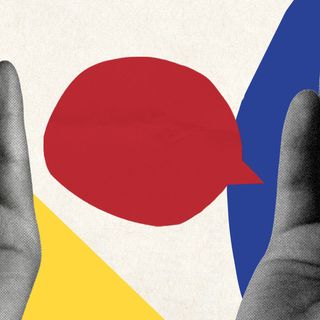In this series, we dig into our strange phobias, fixations, and neuroses, and ask ourselves — Is This Normal?
From asking my soft toys if they’re comfortable with the temperature of the air conditioner in the room, to telling my house how much I missed it after coming back from a vacation, to pouring a glass of wine and sitting down with my black dress as we reminisce the last pre-pandemic party we went to together — I am often seen talking to inanimate objects. I have even named some of them. While I’ve been doing this since as far back as I can recall, and don’t think there’s anything unusual about it — I’ve had friends and colleagues raise their eyebrows at my “weird” behavior. But how weird is it?
Known as anthropomorphism, or attributing human traits, emotions, or intentions to non-human entities, experts have linked it to social intelligence. “Historically, anthropomorphizing has been treated as a sign of childishness or stupidity, but it’s actually a natural byproduct of the tendency that makes humans uniquely smart on this planet… No other species has this tendency,” Nicholas Epley, a professor of behavioral science at the University of Chicago, told Quartz.
Experts note that the human tendency to see faces in inanimate objects, which is a driving factor behind anthropomorphism, is a result of our ability to recognize and read faces and expressions, in order to distinguish between friends and potentially fatal foes. In fact, some have even attributed the act of anthropomorphizing often to higher intelligence and empathy.
Moreover, research suggests that humans also have a tendency to associate unpredictability with humanness — kind of like saying “[an object, x] has a mind of it’s own.” In fact, it is reported that a survey actually found that people attributed personalities to cars that needed more unexpected repairs, than those that functioned more smoothly.
Related on The Swaddle:
Is This Normal? “I Talk to Myself Out Loud”
But why do I only have names for some objects, and not others? First, experts note that we assign names mostly to objects we really like and care for. Second, the level of emotional attachment one has, or believes to potentially develop in future, with the object (for instance, with a new car, or an expensive golf club) — also plays a role, as does the “level of importance one places on it,” David Peterson, a celebrated linguist, told The Cut.
In addition, anthropomorphism is also understood to be a coping mechanism to deal with social isolation — in fact, two different studies have found strong links between loneliness and anthropomorphism. An example from pop culture that is often cited to explain this link is that of Tom Hanks naming a volleyball, and treating it as his companion in Castaway when he’s stranded alone on an island. While I wouldn’t describe myself as ‘lonely’ now, I did grow up as an only child — more often than not, playing just by myself. No wonder, then, that I picked up the habit of talking to inanimate objects as a kid.
Experts believe that instead of dismissing the human-ish treatment of inanimate objects as ‘weird’ or ‘crazy,’ delving into the psychology behind it can also help us understand human behavior better. “When you understand when people think of other agents as mindful, you can both try to explain why people treat non-humans as humans, but also sometimes why people treat humans as objects,” Epley noted.




